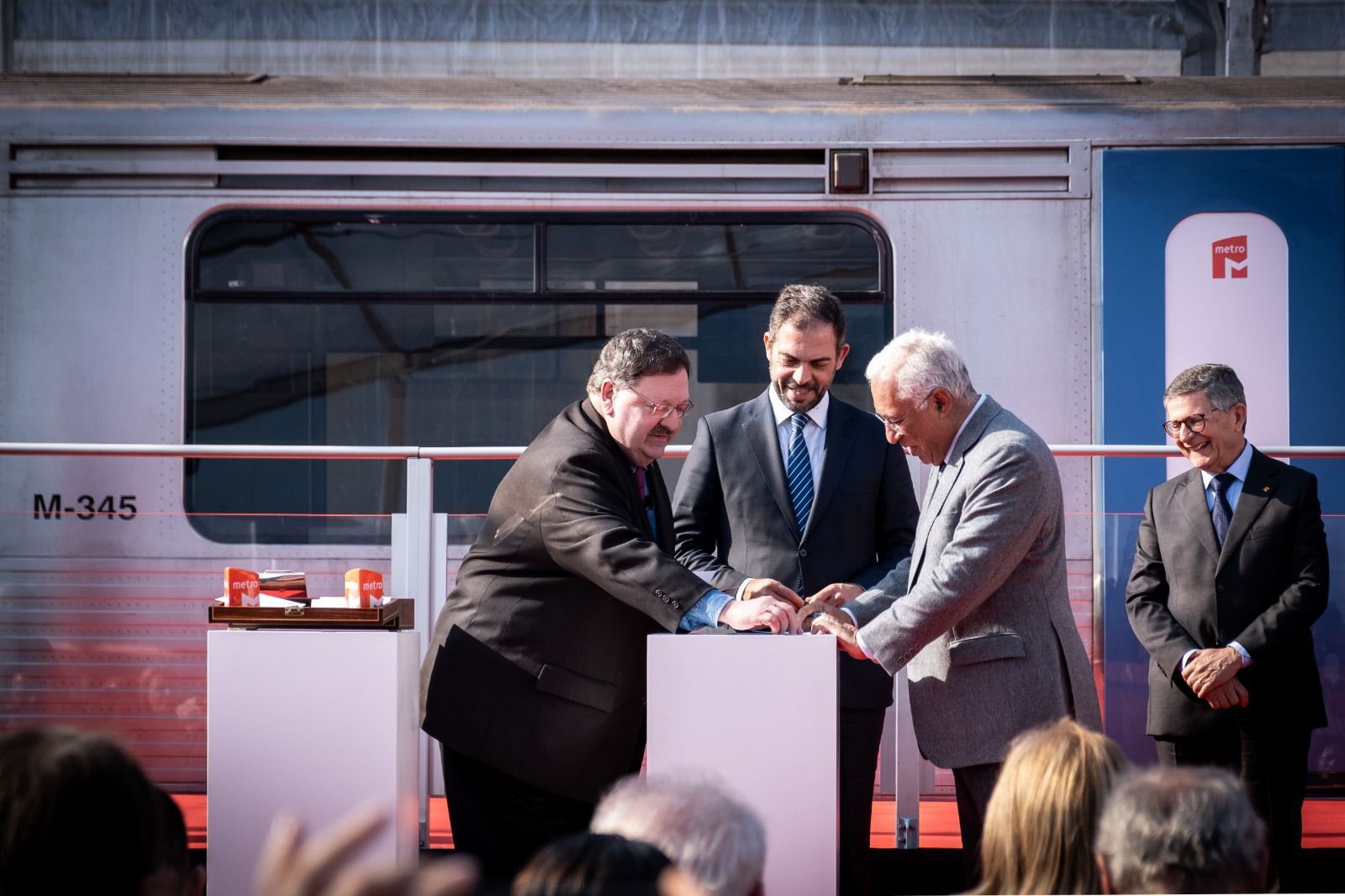 Metropolitano de Lisboa has launched the tender estimated at EUR 405.4 million for the design and construction of Lisbon Metro Red Line extension project from São Sebastião to Alcântara.
Metropolitano de Lisboa has launched the tender estimated at EUR 405.4 million for the design and construction of Lisbon Metro Red Line extension project from São Sebastião to Alcântara.
The announcement was made during the 75th anniversary of the Lisbon Metro celebrated at Terreiro do Paço station (on the blue Line) by the Prime Minister, António Costa, the Minister of the Environment and Climate Action, Duarte Cordeiro, the Mayor of Lisbon, Carlos Moedas, and the Chairman of the Board of Directors of Metropolitano de Lisboa, Vitor Domingues dos Santos.
During the event, an exhibition was held to display company’s historic milestones as well as future development within the scope of the Expansion and Modernisation Plan.
The 4 km metro extension will start from the São Sebastião interchange station (Red and Blue Line) crossing through a double-track tunnel section built next to the Palace of Justice towards Alcântara. The line will have three new underground stations (Amoreiras/Campolide, Campo de Ourique and Infante Santo) and the Alcântara station will be above ground constructed. The global project has a value of EUR 500 million.
The Minister of Environment and Climate Action said that following its completion, the Red Line extension will attract 25 million passengers a year replacing 1.9 million car trips and saving 24,000 tonnes of CO2 emissions.
Lisbon Metro Red Line extension is one of the projects included into system’s development plan aiming at better connections and mobility, providing increased accessibility and reduced travel time while removing CO2 emissions. Metro de Lisboa is created by 4 lines with a total length of 44.5 km served by 56 stations.
The project is expected to be completed in 2026 and will be financed through the Recovery and Resilience Plan. In October 2021, Metropolitano de Lisboa and the “Recuperar Portugal” Mission Structure signed an agreement to support the development of city’s metro system under the country’s Recovery and Resilience Plan 2026. EUR 554 million is the total value of the financing which are provided for two metro projects including EUR 304 million for the Red Line expansion and EUR 250 million for the Odivelas – Loures LRT project (Violet Line). The 13 km Violet Line will have 19 stations, 11 of them crossing the areas of Loures and 8 will be built in Odivelas. To implement the project, the local authorities signed an agreement in 2021.
The City of Lisbon will have two more stations – Estrela and Santos – that will connect Rato, on the Yellow line to Cais do Sodré (on the Green) and create a Circular line which will be connected to the Lisboa – Cascais railway line. The construction works are scheduled to start in 2024 worth EUR 331 million covered by the Environmental Fund, the Cohesion Fund and the State Budget. In 2021, Stadler and Siemens Mobility signed a EUR 114.5 million contract for train and signalling system supply. Stadler will deliver 14 3-car trains with the first expected to arrive soon and Siemens Mobility will install its Trainguard MT CBTC solution on the Blue, Yellow and Green lines and on 70 existing trains. The new trains from Stadler will be also equipped with this system from Siemens.
When Circular Line will enter operation, will attract more than 47.8 million passengers per year. In 2022, Lisbon Metro transported 136 million passengers, representing a 63% increase compared to 2021, but is still below the figures for 2019.
“We are implementing or have committed investments worth EUR 4.3 billion until 2030 which include the extension of the metro lines in Lisbon and Porto, the financing of new buses with high environmental performance, the purchase of boats electric lines for crossing the Tagus, the acquisition of signalling and safety systems for the metro systems and rolling stock procurement,” the Minister of the Environment and Climate Action said.
These projects will contribute to the increase of public transport access and the quality of the services and together with other actions and measures the authorities aim to decarbonise the transport sector to reduce the emissions by 40% until 2030.
Share on:









